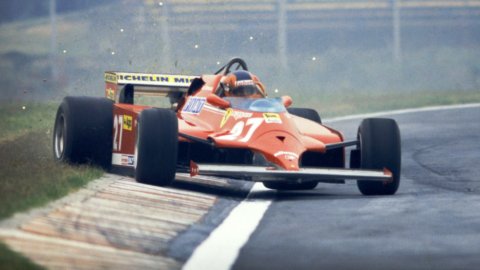Thirty-five years have passed since the disappearance of Gilles Villeneuve, one of the most loved pilots by the public. The tragic accident on the Belgian circuit of Zolder, remained in the collective imagination of generations of enthusiasts, has only put an end to a short but intense career - his experience in the Formula 1 circus lasted only 5 years, from 1977 to 1982 -, but an impressive sequence of reckless runs, the courage thus exposed, always, had already placed him in the legend of speed.
From 21 April to 16 July 2017, allo Spazio Oberdan in Milan, the exhibition Wow, Gilles!, curated by Ercole Colombo and Giorgio Terruzzi , organized by ViDi, with the patronage of ACI Milano, traces the human and sporting history of Gilles Villeneuve, through over 170 photographs by Ercole Colombo, a sports reporter among most appreciated, a life spent in Formula 1 behind the lens of his reflexes, used to portray the heroes of the wheel in the intense moments of the race and in those of private life.
The exhibition is enriched by some images from the Villeneuve Museum in Berthierville in Canada and by the engine of the 126 Ferrari 1981CK Turbo, as well as a section with other objects linked to the myth of Villeneuve.
The exhibition itinerary follows a double channel, in which the images of Colombo are counterpointed by the texts of Terruzzi who accompany the visitor along the biographical story of Villeneuve.
The story, in fact, starts right from 1950, the year of Gilles' birth, and analyzes the period of his youth, when he begins to articulate his passion for engines, through night raids driving his father's cars, participating in the first races of acceleration, then competing with snowmobiles, thanks to which he begins to build a certain notoriety. 1973 is his debut in the world of single-seaters: Formula Ford, Formula Atlantic, Formula 2, up to his debut in Formula 1 with a McLaren, in the British Grand Prix.
We are in 1977, the year that will upset his existence. On 29 August, in Maranello, Villeneuve met Enzo Ferrari for the first time who, in the midst of a stormy divorce from Niki Lauda, wanted to reaffirm the supremacy of his cars over the driver. The negotiation is short: Gilles makes his debut on the red, on October 9, in Canada.
“When they introduced me to that little Canadian – Enzo Ferrari recalled -, all nerves, I immediately recognized Nuvolari's physique in him and I said to myself: Give him a chance”.
With his photographs, Ercole Colombo fully captures the emotion of the moment. The exhibition also brings together the most significant and unpublished images of a dazzling career: from the first, sensational accidents that led to the nickname 'Aviator' - given that Gilles seemed to want to spend more time in the air than on the asphalt - to the first victory, obtained on the circuit at home in 1978, in the epic duel with René Arnoux in the French Grand Prix in Dijon, 1979. A long sequence of overtaking, gambles, skids, and contacts that gave rise to the "Villeneuve Fever" among Ferrari fans that will never leave them.
Ercole Colombo, in addition to documenting his experience on the track, bears witness to the birth of a living legend, a hero of our times, loved and admired for his all-high-pitched and exaggerated style, such as the record of 2 hours and 45 minutes from Montecarlo to Maranello. “He did everything at 300 km/h – recalled Patrick Tambay, who took over his seat after his death – Skiing, driving a motorboat or playing backgammon”.
The exhibition itinerary continues with the reconstruction of his annus horribilis, 1982, with the moral slap received by his teammate Didier Pironi who, in contravention of team orders, overtook him on the last lap of the Imola Grand Prix, until the tragic and last flight to Zolder which marked the end of his young life.
The exhibition closes ideally with the room dedicated to his son Jacques, who has completed a sort of family mission, winning a historic trio of victories: the American Cart championship, the Indianapolis 500 and, finally, the world championship of Formula 1, in 1997.





